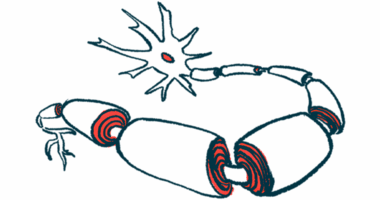Adverse Effects Influence Patient’s Perspective of Ocrevus’s Effectiveness, Survey Shows

Higher rates of adverse effects have a negative impact on a patient’s perspective about treatment with Ocrevus (ocrelizumab), according to a survey conducted by the multiple sclerosis community GeneFo.
About half of the 840 patient responses surveyed so far have reported improvements from Ocrevus. Those reporting none had a higher rate of adverse effects, a finding highlighting the importance of doctors managing the therapy’s side effects.
The U.S. Food and Drug Administration approved Ocrevus, which was developed by Genentech, on March 28, 2017. It was a landmark decision, because Ocrevus became the first treatment approved for both the relapsing and progressive forms of MS.
Now, a year after the approval, GeneFo asked patients about their experiences with Ocrevus.
“There has been such a buzz in the MS community, and on our platform in particular, about Ocrevus, which is completely natural as patients are discovering in real-time the effects of a new disease-modifying therapy,” Neer Ziskind, GeneFo’s CEO, said in a news release provided to Multiple Sclerosis New Today. “People who began treatment were happy to share from their experience, and potential Ocrevus users were of course eager to learn from their peers and get advice on how to best adapt to this new medication.”
Sixty percent of the patients who have responded to the survey have relapsing-remitting MS and 28 percent primary progressive MS. Eight percent of the rest have secondary progressive MS, and 5 percent progressive-relapsing MS.
Half of the respondents reported no improvements, while the other half felt Ocrevus was effective. Thirty-six percent who reported improvements said they could walk better, 36 percent said they were less fatigued, and 14 percent said they could see better. Many respondents reported better balance, bowel movements, and heat tolerance, and less brain fog and numbness.
Forty-four percent of respondents reported no long-lasting adverse effects. But 21 percent reported more fatigue, 12 percent more pain, 10 percent more itching, and 6 percent more infections after treatment.
In trying to understand the reasons underlying the effective versus non-effective outcomes, those analyzing the survey results found a significant correlation between adverse effects and lack of effectiveness. Among those reporting that Ocrevus was effective, only 27 percent had lasting side effects. The figure was more than double that — 58 percent — among those who found the therapy ineffective.
Although the findings reflect patients’ perception of the therapy’s effectiveness, they highlight the need for doctors to pay close attention to managing any adverse effects associated with Ocrevus. A better perception of the treatment could not only improve a patient’s mood but also their willingness to stick with it, those doing the analysis said.
The report also found a correlation between gender and the perception of Ocrevus’s effectiveness. Seventy percent of men reported it was effective, versus 50 percent of women. Once again, the numbers correlated with the rate of lasting adverse effects. Ten percent of men reported lasting effects, compared with 54 percent of women.
Although this gender difference needs to be further evaluated, it calls attention to an important factor in treatment optimization and care, those doing the analysis said.
GeneFo is looking for more feedback on Ocrevus to enrich the initial results. To participate in the survey and see an infographic highlighting the results so far, please visit https://tinyurl.com/genefoOCREVUS.






